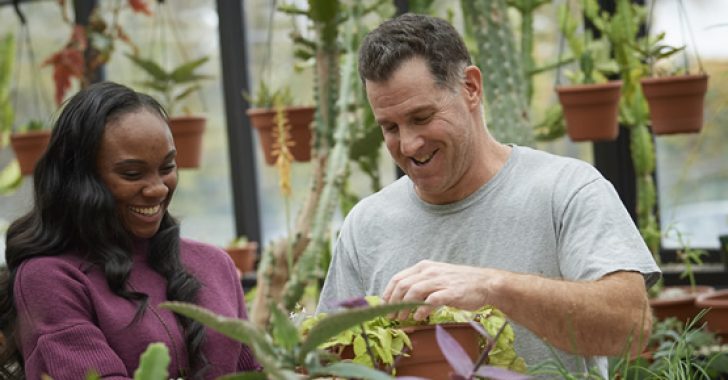How Does Our Garden Grow? Cultivating A Therapeutic Gardening Program
Humans have long understood nature’s therapeutic effects on our mental and emotional health. As early as the 19th century, gardening has been used as a treatment for people with mental health difficulties.
In recent years, gardening programs have sprouted up in addiction and mental health treatment facilities all around the world. The treatment has also been studied under a variety of names, including ecotherapy, green therapy, nature-assisted therapy, and horticultural therapy.
“Gardening is a common complementary or adjunct therapy, which means that it’s not the only thing that someone may need as part of their recovery, but it can be a helpful addition to more traditional treatments like cognitive behavioral or medication-assisted therapies,” says Lara Haagen, Eagleville Hospital’s Adjunctive Therapies Clinical Coordinator.
“Being in nature has been a part of our collective human experience throughout history, but most of us now spend 90 percent of our time indoors,” Haagen continues. “Reconnecting with the natural world has a number of physical, mental, emotional and even spiritual health benefits. It can provide a sense of accomplishment and restore a sense of hope as our patients help the plants grow and thrive.”
Gardening Boosts Mental and Physical Wellbeing
Gardening programs offer much more than fresh air and sunshine. In the context of addiction and mental health facilities, gardening programs have been shown to:
- Reduce depression symptoms
- Reduce anxiety symptoms
- Increase attention
- Boost self-esteem
- Uplift mood
- Improve sleep
- Create a social network and improve social skills
- Change attitudes toward work
- Restore a spiritual connection to nature and the earth
Eagleville Hospital Gardeners Get Back To Their Roots
Eagleville Hospital’s gardening program goes a step beyond planting and weeding. Patients have two opportunities to put their green thumbs to use: open greenhouse times and an official Gardening Club.
“During the open greenhouse period, any patient is welcome to stop by and tend to the plants,” says Tesia Williams, a Recreation Therapist at Eagleville Hospital. “They don’t have to be a member of the Gardening Club to participate. We also encourage patients who drop in to take a plant back to their unit to care for it, which brings a little bit of natural beauty to their unit.”
Haagen notes that in-unit plants have become popular over the years, and many patients donate their plants to their therapists prior to discharge.
“A lot of our therapists have some pretty substantial plants in their offices,” says Haagen. “Every once in a while, I’m given a big bag of cuttings from a therapist whose office plants need to be pruned back! It’s a beautiful cycle of growth and giving.”
Eagleville also offers a weekly Gardening Club that involves up to 20 patients, who water, weed, prune, prepare cuttings, and cultivate new plants.
During the outside growing season, which starts in the late spring, Gardening Club members are tasked with tending the hospital’s outdoor vegetable garden, which is housed in a series of raised beds.
“Produce harvested from the vegetable garden is actually served in the Levine Dining Hall,” Williams says. “We grow tomatoes, peppers, beans, lettuce, cucumbers, herbs, and zucchini, and patients really enjoy getting to taste the results of their hard work.”

